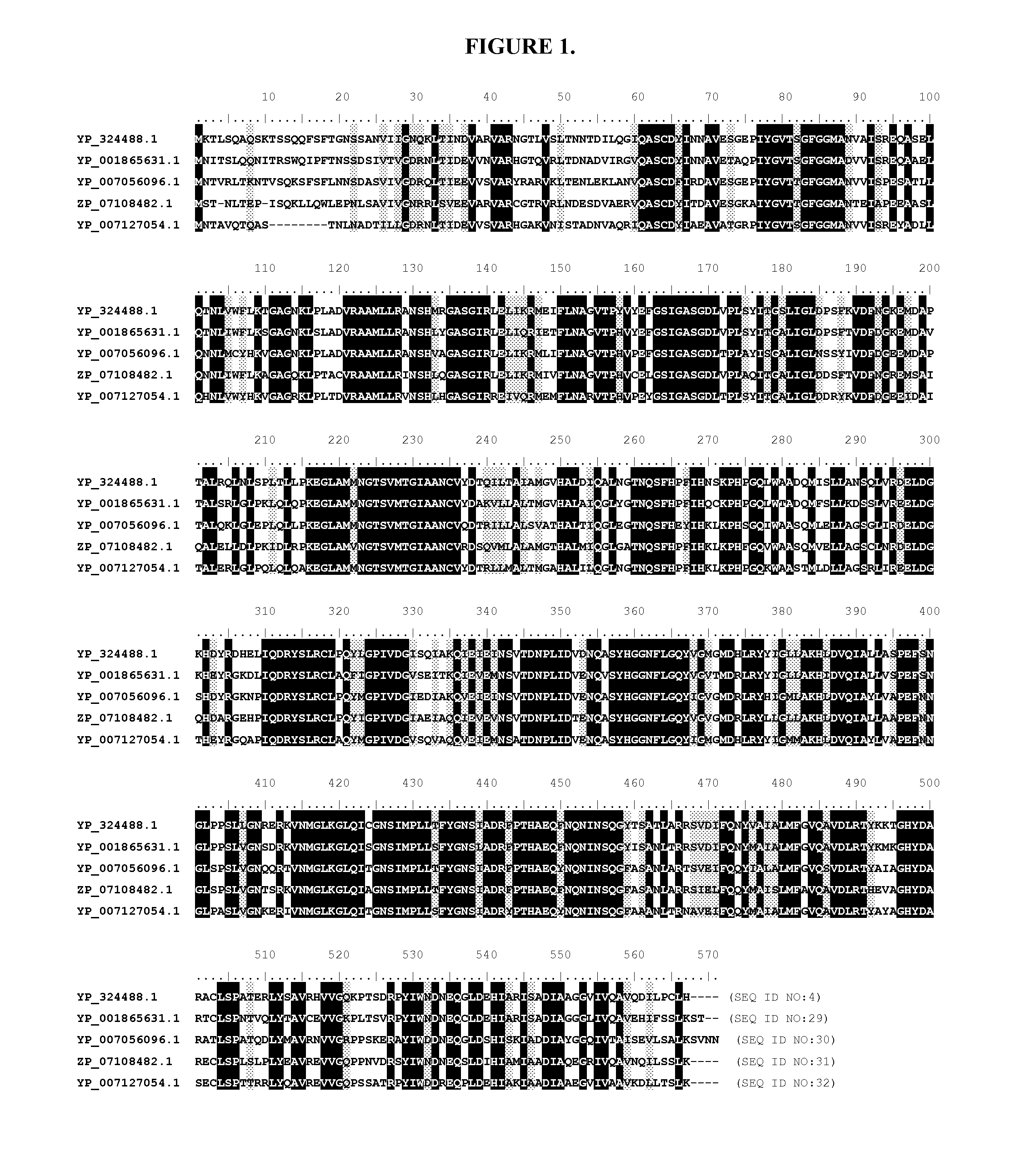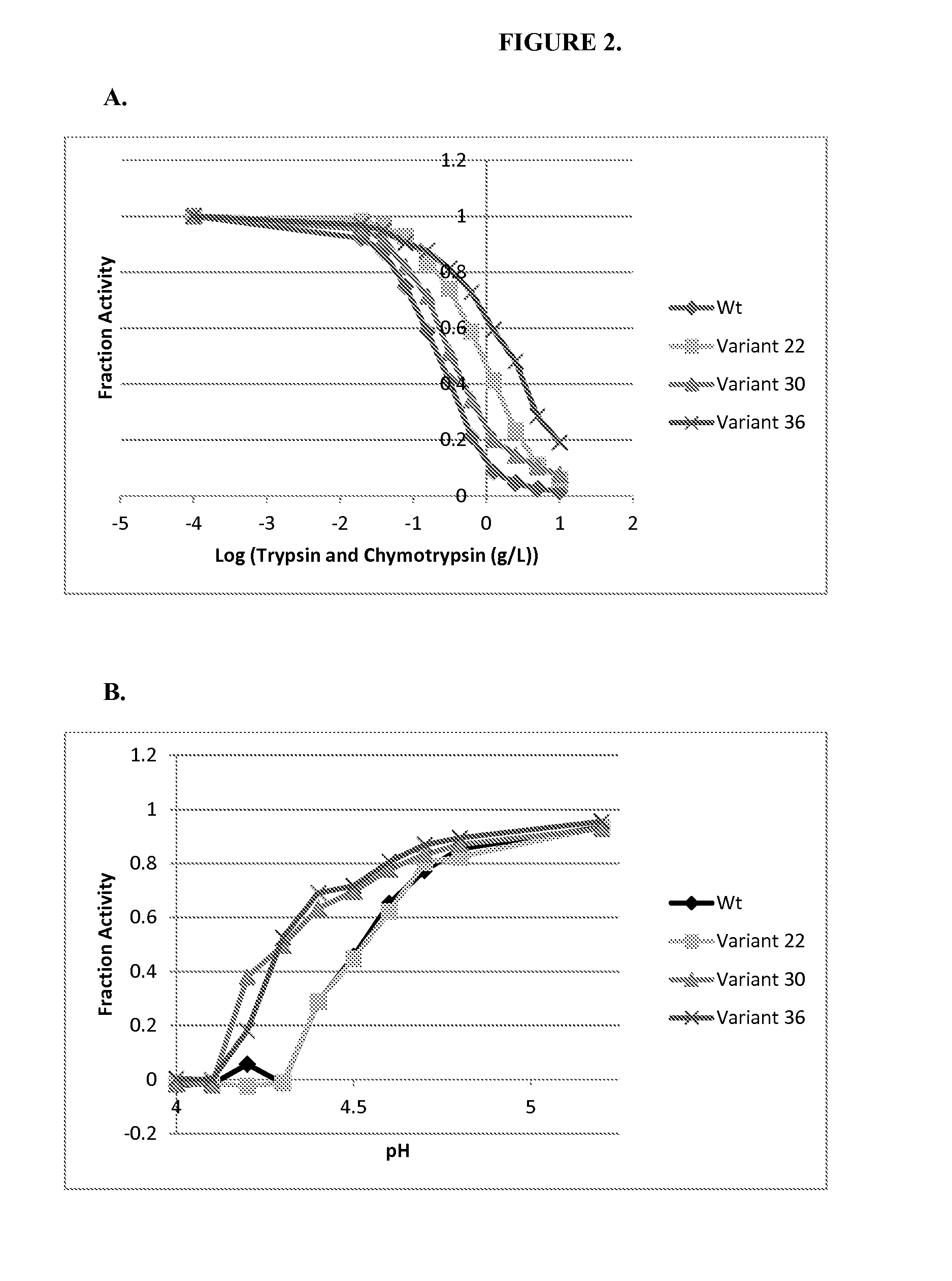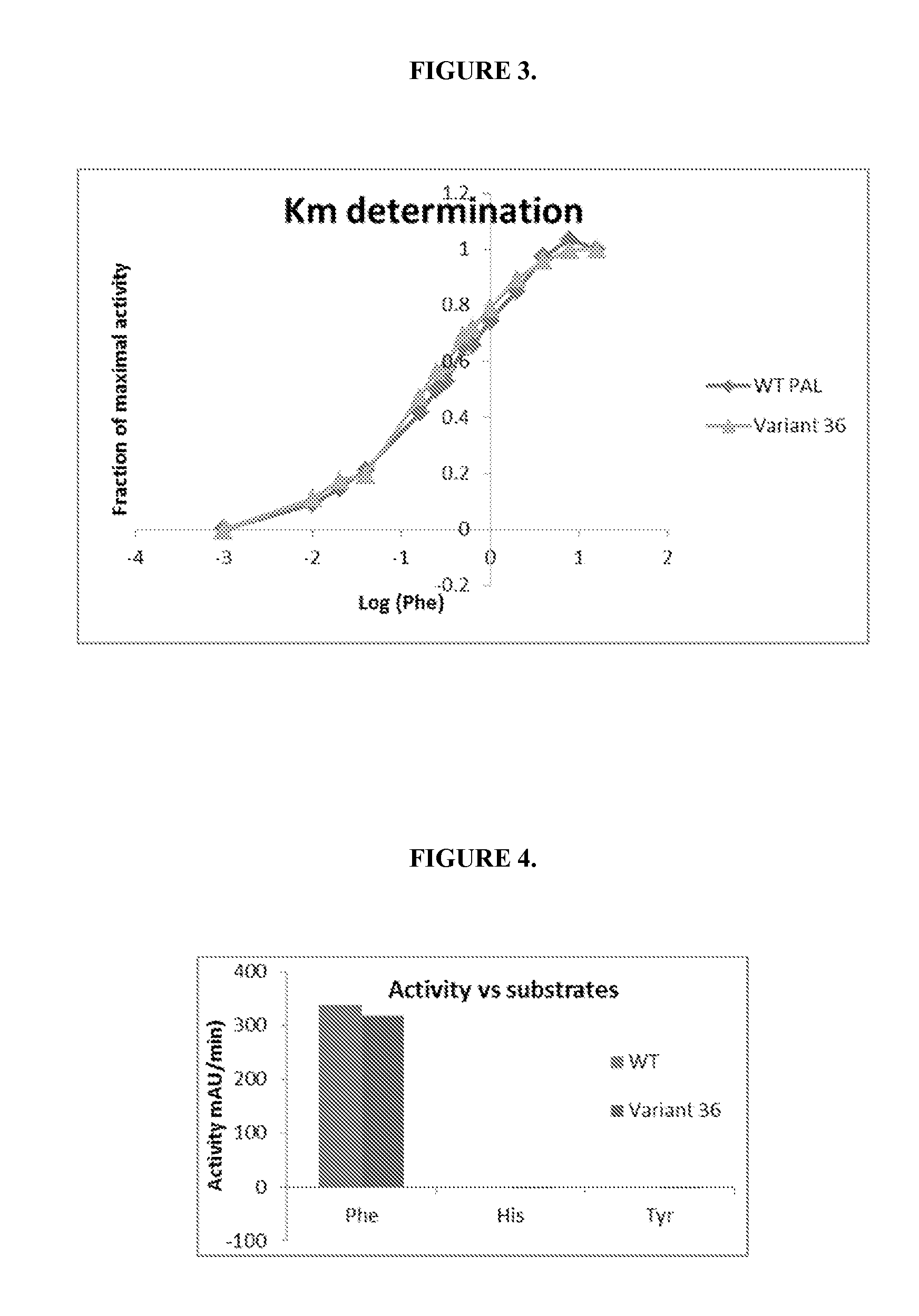Engineered phenylalanine ammonia lyase polypeptides
a technology of phenylalanine ammonialyase and polypeptide, which is applied in the direction of lyases, carbon-nitrogen lyases, metabolism disorders, etc., can solve the problems of high levels of phenylalanine in the bloodstream, significant medical problems, and intellectual disability, and achieves enhanced catalytic activity, reduced sensitivity to proteolysis, and increased tolerance to acidic ph levels
- Summary
- Abstract
- Description
- Claims
- Application Information
AI Technical Summary
Benefits of technology
Problems solved by technology
Method used
Image
Examples
example 1
PAL Gene Acquisition and Construction of Expression Vectors
[0234]Anabaena variabilis phenylalanine ammonia lyase (AvPAL) plasmid DNA was obtained and a synthetic gene encoding AvPAL was codon optimized for expression in E. coli and cloned into the E. coli expression vector pET16b to provide pET16b-AvPAL (SEQ ID NO:1). The AvPAL open reading frame (SEQ ID NO:2) was amplified by PCR using the oligonucleotides: PAL-pCK-F and PAL-pCK-R and subcloned into the expression vector pCK100900i (SEQ ID NO: 27).
SEQ IDPrimerSequence 5′ to 3′NO:PAL-CTAGAGGCCAGCCTGGCCATAAGGAGATATACATSEQ IDpCK-FATGAAAACCCTGAGCCAGGCACNO: 28PAL-GATGGTGATGGTGGCCAGTTTGGCCTTAATGCAGSEQ IDpCK-RACACGGCAGAATGNO: 29
[0235]This plasmid construct was transformed into an E. coli strain derived from W3110. Directed evolution techniques generally known by those skilled in the art were used to generate libraries of gene variants from this plasmid construct (See e.g., U.S. Pat. No. 8,383,346 and WO2010 / 144103).
example 2
High-Throughput (HTP) Growth and Assays
[0236]In this Example, methods used for HTP growth and various assays used to test the variant PALs are described.
High-Throughput (HTP) Growth of PAL and PAL Variants
[0237]Transformed E. coli cells were selected by plating onto LB agar plates containing 1% glucose and 30 μg / ml chloramphenicol. After overnight incubation at 37° C., colonies were placed into NUNC™ (Thermo-Scientific) the wells of 96-well shallow flat bottom plates filled with 180 μl / well LB supplemented with 1% glucose and 30 μg / ml chloramphenicol. The cultures were allowed to grow overnight for 18-20 hours in a shaker (200 rpm, 30° C., and 85% relative humidity; Kuhner).
Overnight growth samples (20 μL) were transferred into Costar 96-well deep plates filled with 380 μL of Terrific Broth supplemented with 30 μg / ml chloramphenicol. The plates were incubated for 135 minutes in a shaker (250 rpm, 30° C., and 85% relative humidity; Kuhner). The cells were then induced with 40 μL of 1...
example 3
Assays to Determine Protein Aggregation of PAL Variants
[0243]The propensity of the PAL variants to aggregate is determined using the ProteoStat® Protein Aggregation Assay kit (Enzo), according to the manufacturer's instructions. Briefly, purified PAL at 0-100 μM is mixed with ProteoStat® detection reagent (1:2000) and analyzed via flow cytometry. Samples are assessed for fluorescence, consistent with the ProteoStat® Aggregation Standards, as known in the art (See e.g., Bershtein et al., Mol. Cell, 133-144 [2013]).
PUM
| Property | Measurement | Unit |
|---|---|---|
| pH | aaaaa | aaaaa |
| pH | aaaaa | aaaaa |
| temperature Tm | aaaaa | aaaaa |
Abstract
Description
Claims
Application Information
 Login to View More
Login to View More - R&D
- Intellectual Property
- Life Sciences
- Materials
- Tech Scout
- Unparalleled Data Quality
- Higher Quality Content
- 60% Fewer Hallucinations
Browse by: Latest US Patents, China's latest patents, Technical Efficacy Thesaurus, Application Domain, Technology Topic, Popular Technical Reports.
© 2025 PatSnap. All rights reserved.Legal|Privacy policy|Modern Slavery Act Transparency Statement|Sitemap|About US| Contact US: help@patsnap.com



